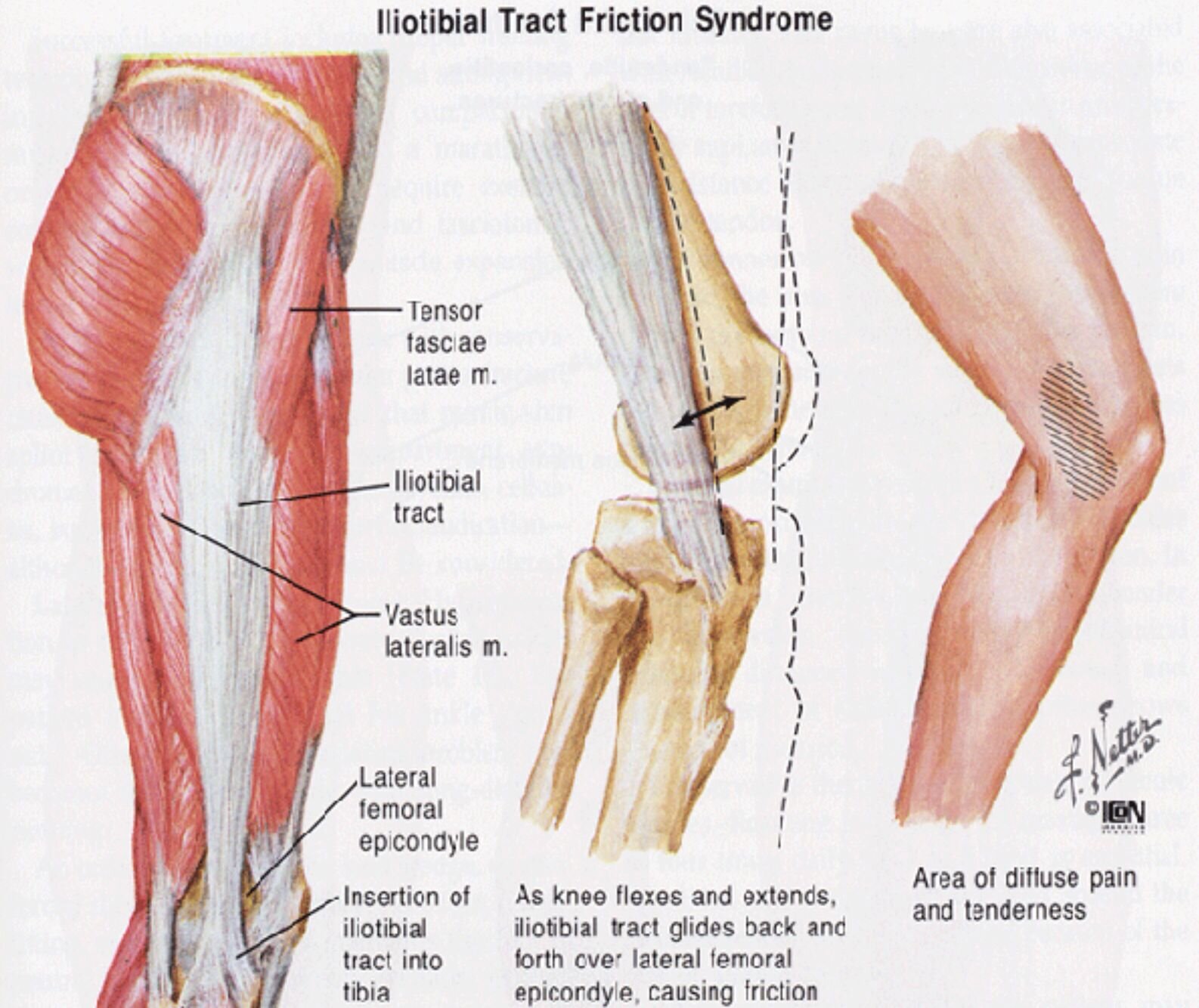Is IT Band Syndrome The Cause Of My Hip and Knee Pain?
Have you been noticing pain on the outside of your knee, hip, or thigh without a known injury? If your answer is Yes, then you may be experiencing symptoms of Iliotibial Band Syndrome. Iliotibial Band Syndrome (IT Band Syndrome) presents as pain along the outside of the thigh from the hip to the knee.
Beyond the pain and discomfort, you may also hear audible snaps as the tissue frictions over the outer edge of the thigh bone. Your IT Band is a strong, thick, fibrous band of tissue that runs down the outside of your thigh. As you can see in the illustration below it extends all the way from your hip bone to the top of your shinbone as it melds with the musculature of your hip and thigh to assist with stabilizing both areas during movement.
With repeated bending and straightening movements of the knee, the IT Band may friction and irritate surrounding tissues, causing pain. It is most common for people who often perform repetitive motion, especially distance runners, cyclists, or new recreational athletes.
Your physical therapist will be able to identify whether your pain is a result of IT Band Syndrome or another problem based on your symptoms as well as a physical examination assessing your strength, flexibility, gait pattern, and quality of movement.
Once your concerns are identified as IT Band Syndrome, you and your physical therapist will design a customized plan of care to address your imbalances and movement dysfunction.
Common treatments include:
Flexibility and mobility work: dynamic stretching, static stretching, and foam rolling.
Key Points: Your dynamic, static, foam roll stretches should address the muscles that connect into the IT band: tensor fasciae latae, vastus lateralis, and glutes vs rolling directly on the fibrous tissue (see anatomy photo above).
Progressive strength training addressing the muscle groups of the core, hips, thigh, and lower leg.
Key Point: You should not reproduce your pain and/or snapping with any of your exercises addressing the quadriceps, hamstrings, glutes, and hip rotators.
Biomechanics training to address movement pattern dysfunction and gait abnormalities.
Key Point: Often movements patterns such as your gait, squats, and step ups can be retrained in a mirror with the guidance of your physical therapist.
Activity modification like relative rest, reducing mileage and repetitive stress movements will help reduce friction and inflammation in the tissues as you heal.
Key Point: Rest is relative. If your body is use to running 40 miles per week, rest may be reducing your mileage to 20 miles per week.
Ready to find out what’s going on? Below are tips to help you get the most out of your 1 Hour Evaluation at The Knee Joint:
Think back to when your symptoms first started.
Sample info: date of injury, aggravating and alleviating factors for pain, when during the 24 hour time span does your pain tend to be at its worst?)
Write down all questions you want answered about your activities, alternative treatments and bring them along with you to ask your therapist. Here are some sample questions to ask:
How many PT sessions will I need before I start to see results?
What if I skip a day, do I do twice as many exercises the next day or start fresh the following day?
Do I ice it or apply heat after before and/or activity?
How much activity is too much activity during PT and recovery?
Come ready to collaborate and create a plan of care with your physical therapist. This will initiate an open line of communication. We’ll show you how to use our Patient Portal to stay in touch, discuss progress and ask questions as well as set-up follow up appointments when needed.
Finally, if you’re in pain please know that you don’t have to suffer. We can help. We hope to see you at The Knee Joint so you can start your journey to recovery from pain today.

